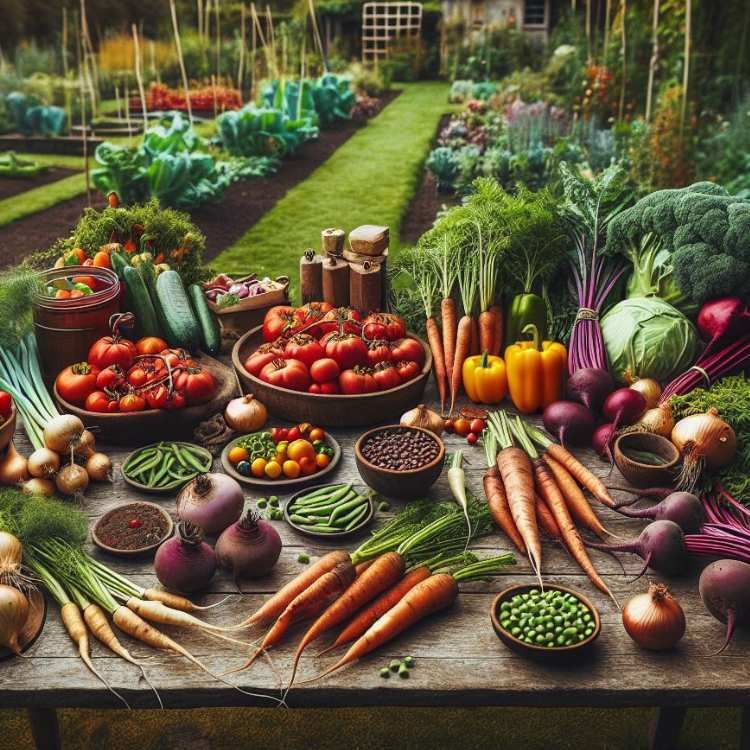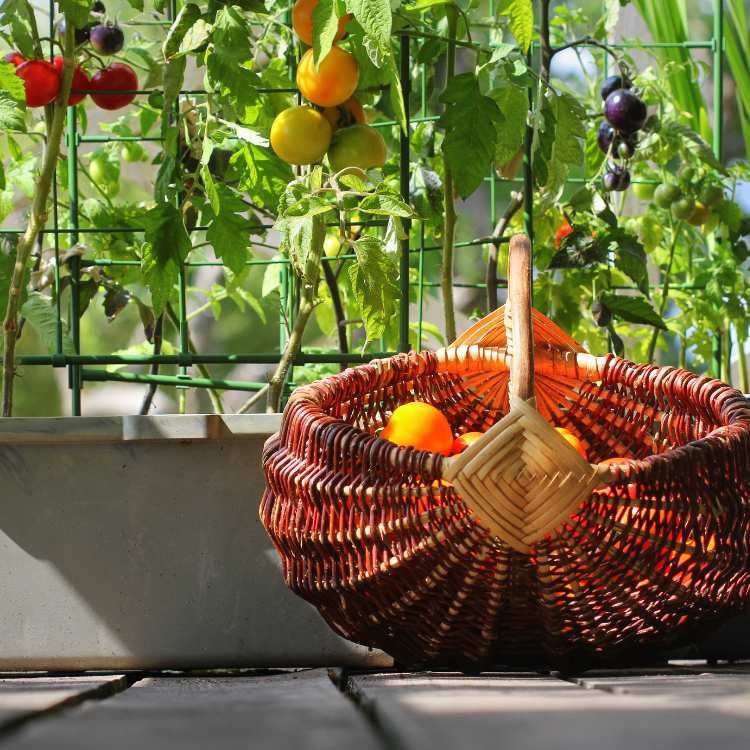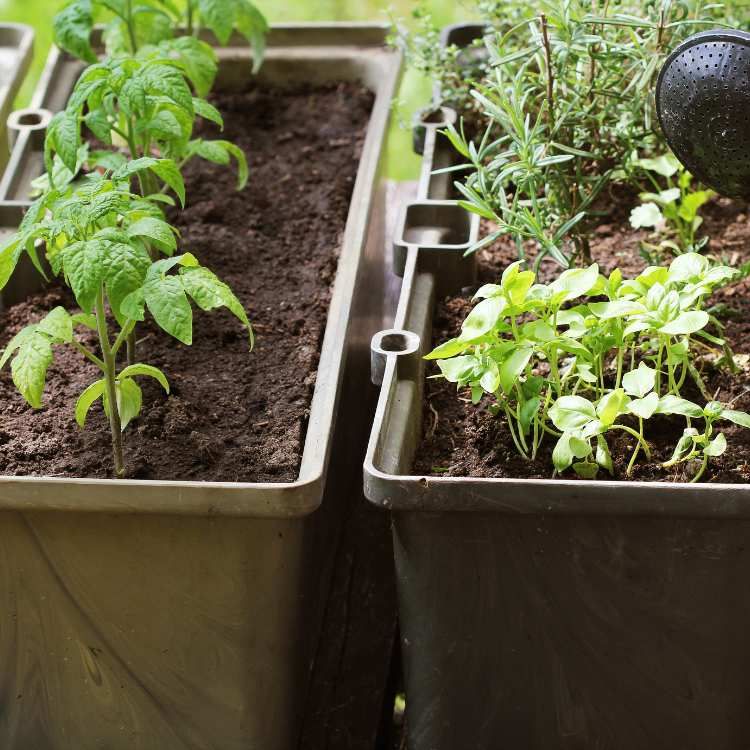
Key Takeaways
Heirloom vegetables are non-hybrid, traditional plants that can bring unique flavors and colors to your urban garden.
Growing heirloom vegetables in urban spaces is possible and rewarding, even with limited space.
Selecting the right heirloom varieties for your climate and space is crucial for a thriving garden.
Non-GMO heirloom seeds are available and can be a sustainable choice for gardeners.
Container and vertical gardening are effective methods for maximizing space and growing heirlooms in the city.
Gardening isn’t just for sprawling country plots; it’s an art that thrives in the heart of the city, on rooftops, balconies, and tiny patches of sunlight. And what better way to infuse life into your urban oasis than with heirloom vegetables? These are the seeds of history, each with a story to tell and a taste that’s unrivaled.
Definition and Significance of Heirloom Varieties
Heirloom vegetables are like family treasures, passed down from generation to generation, preserving their unique characteristics. These plants are open-pollinated, meaning they reproduce naturally and maintain their traits over time. They’re the antithesis of modern hybrid varieties, which are often bred for uniformity and shelf life rather than flavor.
But why does this matter? Because these old-time varieties offer a diversity that’s not just about colors and shapes but also about resilience and adaptability. They’ve stood the test of time for a reason.
Breathing New Life Into Your Urban Space
Now, you might think, “My space is too small for a garden,” but that’s the beauty of heirloom vegetables. With the right approach, you can transform even the smallest spaces into a verdant retreat brimming with life. It’s about making the most of what you have and watching as your balcony or window sill becomes a canvas for the vibrant hues and textures of heirloom plants.
Why Heirloom Vegetables Make a Difference

When you choose to grow heirlooms, you’re not just planting vegetables; you’re nurturing a slice of history. Each seed carries with it the flavors and stories of its ancestors. Imagine biting into a tomato that tastes the same as it did a century ago, or harvesting carrots that come in a rainbow of colors.
But it’s not all about nostalgia. Heirloom vegetables are often more nutritious than their store-bought counterparts. They haven’t been bred to sacrifice taste and nutritional value for the sake of transportability or uniform appearance.
Most importantly, by growing heirlooms, you’re participating in a movement to preserve plant diversity. With each heirloom variety that’s cultivated, we ensure these plants don’t disappear, keeping the genetic pool rich and varied.
Savoring the Taste of Legacy and Diversity
Think of heirloom vegetables as the gourmet choice for the home gardener. They offer a symphony of flavors that commercial varieties can’t match. From the sweet, intense burst of a Brandywine tomato to the nutty crunch of a Dragon’s Tongue bean, heirloom vegetables can elevate your home cooking to a new level of deliciousness.
And let’s talk diversity. Heirlooms come in an astonishing range. You could grow purple potatoes, yellow cucumbers, or even white eggplants. The options are nearly endless, ensuring your garden is anything but ordinary.
Preserving Plant Heritage in Urban Settings
Urban environments are more than concrete jungles; they’re potential hotspots for biodiversity. By growing heirloom vegetables, you’re creating a living library of plant genetics right in your city. This isn’t just good for your plate; it’s a boon for the environment, supporting pollinators and beneficial insects that thrive alongside these plants.
Therefore, your urban garden isn’t just a hobby; it’s a conservation effort. It’s a statement that even in the smallest spaces, we can make a difference for our health, our palates, and our planet.
Finding the right seeds is the first step in your urban gardening journey. Look for non-GMO heirloom seeds from trusted sources to ensure you’re getting the purest form of each plant. These seeds have not been genetically modified and carry the true essence of each vegetable variety. You can find these precious seeds online, at local farmers’ markets, or through gardening clubs. Some popular options include:
Survival Essentials
Seed Savers Exchange
Local Harvest
When you buy heirloom seeds, you’re not just getting a product; you’re joining a community of gardeners dedicated to preserving the richness of our agricultural heritage. So choose your seeds with care, knowing that each one holds the potential for abundant growth.
Now, once you’ve got your seeds, the real fun begins. Germination is the process where seeds sprout and begin to grow. Heirloom seeds can be a bit more finicky than their hybrid counterparts, but with a few tips, you’ll see those sprouts in no time.
Where to Find Quality Non-GMO Heirloom Seeds
For those ready to start their heirloom adventure, Survival Essentials offers a vast selection of non-GMO heirloom seeds. From vibrant tomatoes to crisp cucumbers, their collection is a treasure trove for the urban gardener seeking quality and variety.
Sprouting Success: Tips for Germinating Heirloom Seeds
Success with heirloom seeds starts with proper germination. Here’s how to do it:
Use fresh seeds: Heirloom seeds are best used within a few years of purchase.
Start indoors: Use seed trays with a quality seed starting mix to provide a controlled environment.
Keep them warm: Most seeds need a warm environment to germinate. A sunny windowsill or a heat mat can do the trick.
Stay moist: Seeds should be kept consistently moist, but not waterlogged.
Be patient: Heirloom seeds may take a bit longer to germinate, so don’t lose hope if sprouts don’t appear immediately.
Remember, germinating heirloom seeds is like awakening history. Treat them with care, and they’ll grow into plants with stories to tell.
Maximizing Growth in Limited Spaces

Space is often the biggest challenge for urban gardeners, but it doesn’t have to limit your green dreams. With a bit of creativity, even the smallest spaces can yield an impressive harvest of heirloom vegetables.
Container gardening is a fantastic way to grow heirlooms. It allows you to control the soil, water, and nutrients. Plus, containers can be moved to take advantage of the best sunlight throughout the day. When choosing containers, ensure they have good drainage and are large enough to accommodate the mature size of the plants.
Container and Vertical Gardening with Heirlooms
Vertical gardening is another space-saving strategy that works wonders with heirlooms. It involves growing plants upwards using trellises, wall planters, or hanging baskets. This not only saves space but also adds a striking visual element to your urban garden. Here’s how to make the most of vertical gardening:
Choose climbing varieties of heirloom vegetables, such as beans or cucumbers.
Ensure your vertical structures are sturdy and can support the weight of mature plants.
Maximize sunlight exposure by positioning the vertical garden against a south-facing wall.
Vertical gardening not only optimizes your space but also makes harvesting and maintenance easier since you don’t have to bend over as much.
Companion Planting for a Thriving Ecosystem
Companion planting is an age-old practice that involves placing different plants together to enhance growth, deter pests, and improve flavors. It’s particularly effective with heirloom vegetables. For example:
Plant basil near tomatoes to improve their flavor and repel insects.
Grow marigolds among your vegetables to attract pollinators and discourage nematodes.
Place onions near carrots to keep carrot flies at bay.
By pairing the right heirlooms together, you’ll create a harmonious ecosystem right on your balcony or in your urban garden patch.
Tending to Your Urban Heirloom Garden
Once your heirloom plants are in place, they’ll need consistent care to thrive. This means regular watering, fertilizing, and pruning. Water deeply but infrequently to encourage strong root growth. Use organic fertilizers to feed your plants and enrich the soil. And don’t forget to prune when necessary to promote air circulation and prevent disease.
Organic Pest Control and Nutrient Management
Pests can be a challenge, but with organic pest control, you can keep your heirloom vegetables healthy without harmful chemicals. Neem oil, insecticidal soaps, and diatomaceous earth are all effective options. Additionally, practicing crop rotation and using compost can help manage nutrients and keep the soil in top condition.
Consistent Caring: Watering, Pruning, and Training
Consistency is key when it comes to caring for your garden. Set a routine for watering, check your plants regularly for signs of pests or disease, and prune them to maintain shape and health. Training plants to grow upwards with stakes or cages can also save space and reduce disease.
Remember, each heirloom plant has its own set of needs, so take the time to learn about them. This knowledge will pay off with a bountiful harvest of unique and tasty vegetables.
Knowing When to Pick: Signs of Maturity and Ripeness
Harvesting at the right time is crucial to get the best flavor from your heirloom vegetables. Tomatoes should be deep in color and slightly soft to the touch. Leafy greens, on the other hand, are best picked young and tender. Look for firmness in root vegetables like carrots and beets, and a full, rich color.
Listen to your plants; they’ll tell you when they’re ready. A ripe cucumber will snap off the vine with a gentle tug, and a mature bean will be plump within its pod. These little signs are the language of the garden, whispering to you that it’s time to enjoy the fruits of your labor.
From Garden to Table: Heirloom Vegetable Recipes
Once you’ve harvested your bounty, it’s time to savor it. Heirloom vegetables shine in dishes that let their flavors take center stage. A simple salad of mixed heirloom tomatoes, basil, olive oil, and a sprinkle of sea salt is a testament to the power of fresh ingredients. Or consider roasting a mix of heirloom root vegetables with herbs for a side dish that’s as colorful as it is delicious.
Example Recipe: Heirloom Tomato Bruschetta
Ingredients:
4 large heirloom tomatoes, diced
1 clove garlic, minced
1 tablespoon extra-virgin olive oil
1 teaspoon balsamic vinegar
6-8 fresh basil leaves, chopped
Salt and pepper to taste
1 baguette, sliced and toasted
Instructions:
Combine tomatoes, garlic, olive oil, balsamic vinegar, and basil in a bowl.
Season with salt and pepper to taste.
Spoon mixture onto toasted baguette slices and serve immediately.
This dish celebrates the vibrant flavors of heirloom tomatoes and is perfect for a summer appetizer or snack.
Embrace the versatility of heirlooms in your cooking. Try pickling, canning, or even saving some seeds for next year’s garden. There’s a world of possibility in every heirloom vegetable you grow.
Frequently Asked Questions
Urban gardeners often have questions about growing heirloom vegetables. Here are answers to some of the most common queries.
Can You Grow Heirloom Vegetables on a Balcony?
Absolutely! Many heirloom vegetables are well-suited for container gardening. Choose dwarf or bush varieties that require less space. Make sure your containers have good drainage, and place them where they’ll receive plenty of sunlight.
Don’t let a small space deter you. With the right setup, your balcony can become a productive and beautiful heirloom vegetable garden.
How Long Do Heirloom Vegetables Take to Grow?
The time from planting to harvest varies among heirloom vegetables. Leafy greens may be ready in as little as 30 days, while tomatoes can take 60 to 80 days. Root vegetables like carrots and beets might need 50 to 70 days.
Patience is key. Heirlooms can take a bit longer to mature than hybrids, but the wait is worth it for the superior flavor and quality.
Do Heirloom Plants Yield Less Than Hybrid Varieties?
Heirloom varieties may not be as prolific as hybrids, which are often bred for maximum yield. However, what heirlooms lack in quantity, they make up for in quality and flavor.
Remember, the goal of growing heirlooms is not just to produce a large quantity but to enjoy unique varieties and preserve biodiversity.
Are Heirloom Vegetables More Susceptible to Diseases?
Heirloom vegetables can be more susceptible to certain diseases and pests because they haven’t been bred for resistance like many hybrids. However, with proper care, such as crop rotation, good airflow, and organic pest control, you can minimize these risks and enjoy healthy plants.
Additionally, some heirlooms have naturally developed resistance to specific local conditions over generations, which can be a significant advantage.
Can I Save Seeds from Heirloom Vegetables for Next Year?
One of the joys of growing heirloom vegetables is that you can save the seeds for planting next year. Just make sure to harvest seeds from the healthiest, most vigorous plants. Dry them thoroughly and store them in a cool, dry place.
By saving seeds, you’re continuing the legacy of these incredible plants and ensuring your garden’s future.







Leave a Reply